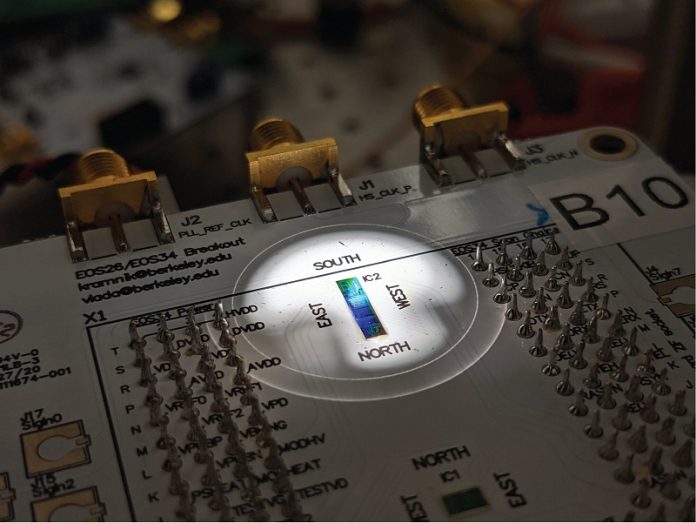
In a major step toward making quantum technology more practical and scalable, scientists from Boston University, UC Berkeley, and Northwestern University have created the world’s first chip that combines electronics, photonics (light-based technology), and quantum systems.
This breakthrough, published in Nature Electronics, shows it’s possible to build complex quantum chips using the same manufacturing process used for regular computer chips.
This new chip is made using a standard 45-nanometer semiconductor process—commonly used in the tech industry—which makes it easier and cheaper to produce at large scale.
What makes it special is that it can reliably generate streams of paired light particles, called photons, which are essential for quantum computing, secure communications, and advanced sensing.
Each chip is like a “quantum light factory,” containing 12 small devices called microring resonators that generate these photon pairs.
These tiny rings must stay perfectly in sync with laser light to keep the process running smoothly.
However, they’re extremely sensitive to changes in temperature or even small differences in how they were made. Without active control, the whole system can go out of tune and stop working.
To solve this, the researchers built a smart control system directly into the chip.
The chip can sense when the resonators are drifting out of sync and automatically adjust them using tiny built-in heaters and detectors.
This real-time adjustment allows the chip to keep generating quantum light consistently, even if the environment around it changes.
According to lead researchers, this is the first time a chip like this has been built using a standard commercial manufacturing process, known as CMOS (complementary metal-oxide semiconductor). CMOS is the same technology used to make billions of everyday computer chips, meaning this quantum chip could eventually be mass-produced.
Building this system required a rare level of teamwork across different fields—including electronics, photonics, and quantum science.
Researchers from multiple universities worked together with industry partners like GlobalFoundries and Ayar Labs, a company that grew out of university research and now leads in developing optical chip technologies.
The successful integration of electronics and quantum light sources in one chip means we’re getting closer to building large-scale quantum systems. These systems could one day power ultra-secure communication networks, improve sensors used in medicine or the environment, and support future quantum computers.
As one researcher put it, this chip is a small but important step on the long road to making quantum technologies a part of everyday life.



